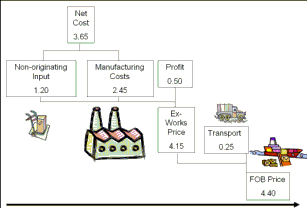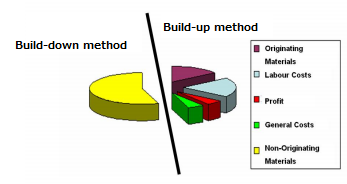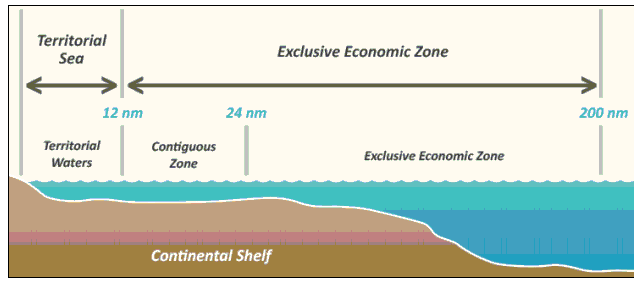Here is a case study of Build-down and Build-up method
Company Y manufactures washing machines in Japan and plans to
export them to Chile under the Agreement.
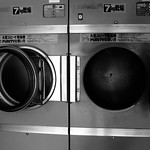
The product specific rule for washing machine (HS8450.11) under the Agreement is:
A change to subheading 8450.11 through 8450.20 from any other heading; or
No required change in tariff classification to subheading 8450.11 through
8450.20, provided that there is a qualifying value content of
not less than 45 percent when the Build-down method is used,
or of not less than 30 percent when the Build-up method is used.
To prove that the washing machine qualifies as an originating good of Japan,
Company Y has to prove that the washing machine satisfies either the CTC rule,
or the 45% value-added rule (Build-down method) or the 30% value-added rule
(Build-up method).
(a)Build-down method
When Company Y uses the method based on the value of non-originating materials
(Build-down method)
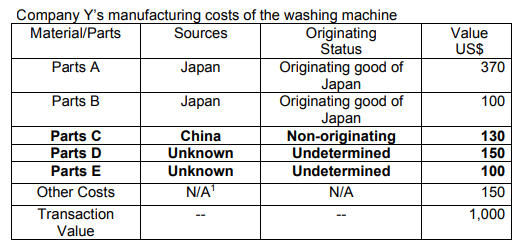
The formula for calculating the qualifying value content (Build-down method) is:
![]()
QVC is the qualifying value content of the good, expressed as a percentage;
TV is the transaction value of the good adjusted to F.O.B. basis; and
VNM is the value of non-originating materials used in the production of the good.
Since the origin of Parts D and E are not determined, in applying the formula,
value of those Parts should be considered as part of the value of non-originating
materials(VNM).
Thus, the calculation of the QVC of the washing machine is:

This calculation shows that the washing machine qualifies as an
originating good of Japan.
(b)Build-up method
(b) When Company Y uses the method based on the value of originating materials
(Build-up method)
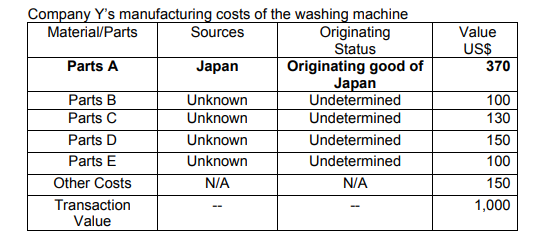
The formula for calculating the qualifying value content (Build-up method) is:

QVC is the qualifying value content of the good, expressed as a percentage;
TV is the transaction value of the good adjusted to F.O.B. basis; and
VOM is the value of originating materials used in the production of the good.
Since it is known that Parts A is originating good of Japan, Company Y found that it
would be easier to use the Build-up method because it is clear that QVC of the
washing machine will be more than 30%, taking into account the value of Parts A
only. In this case, Company Y does not need to check the originating status of other
parts and other costs.
Thus, the calculation of the QVC of the washing machine is:

This calculation shows that the washing machine qualifies as an
originating good of Japan.

